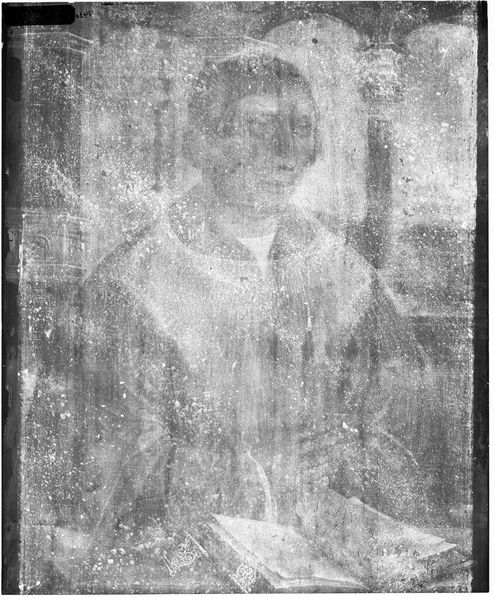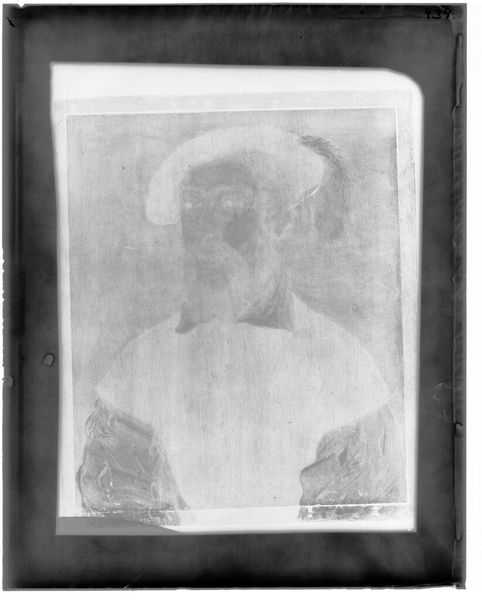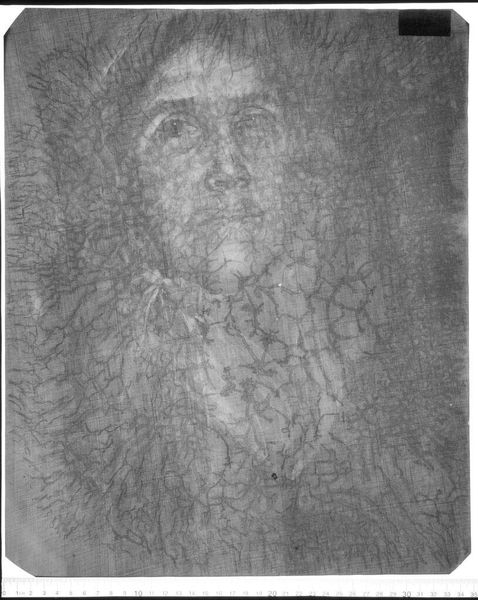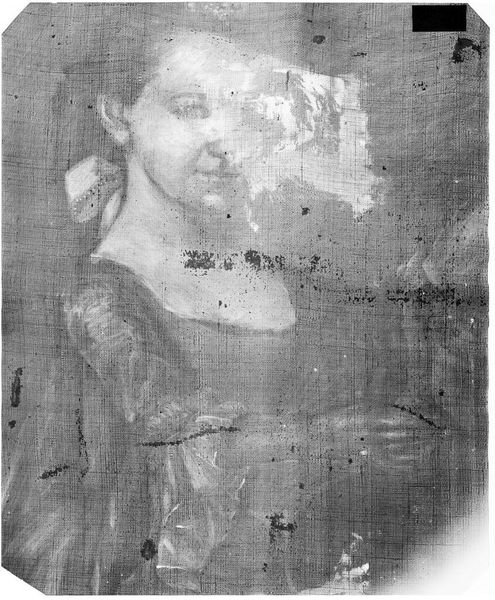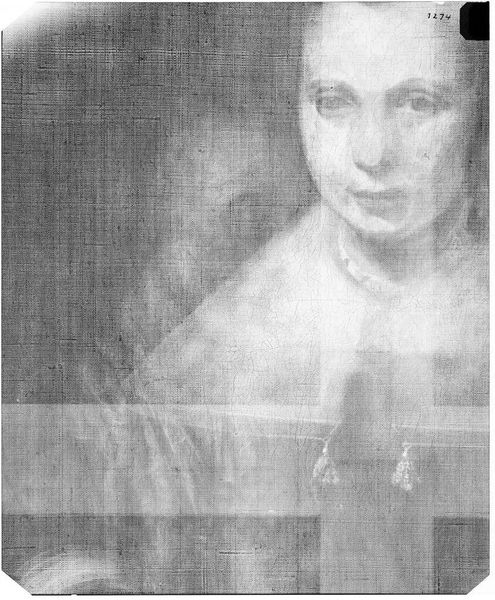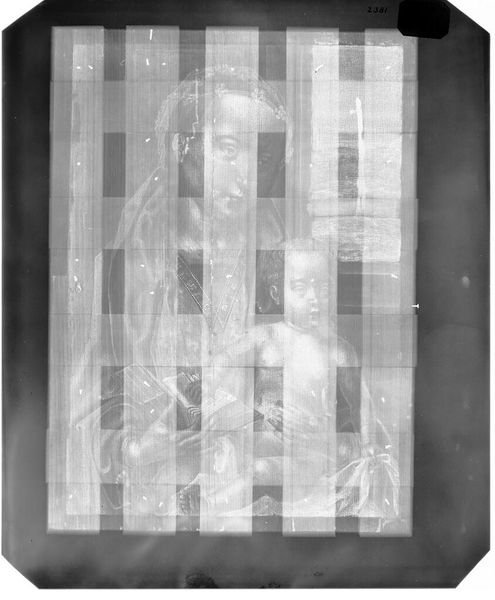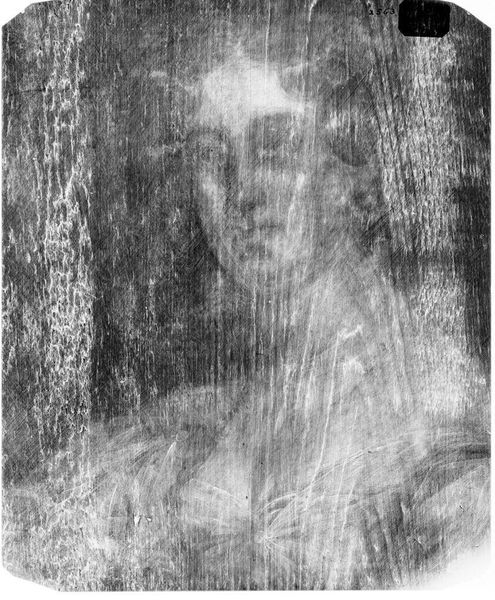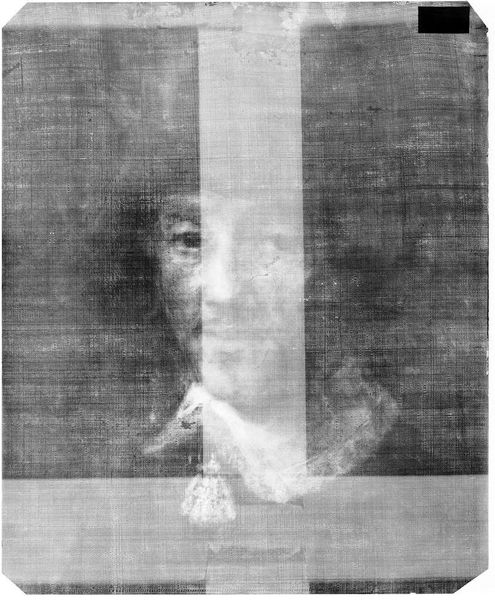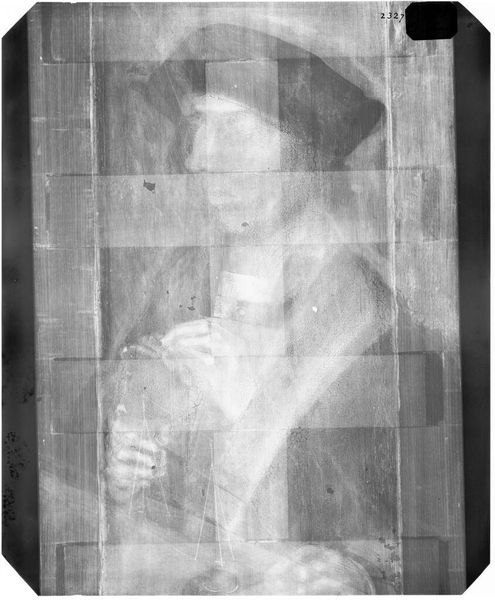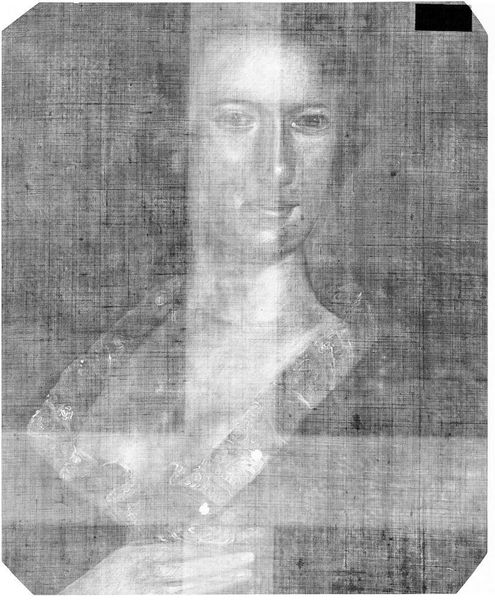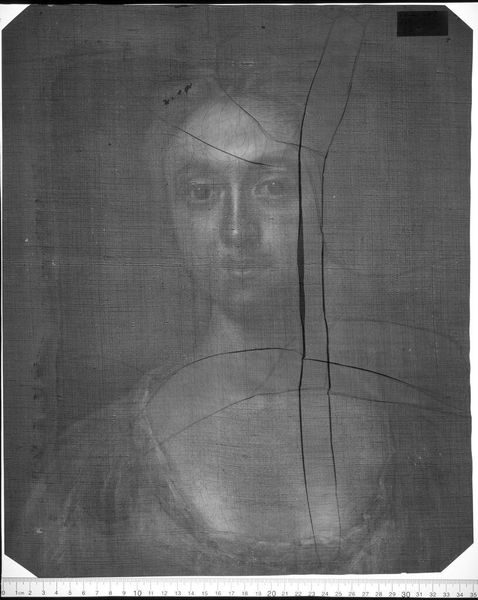
X-radiograph(s) of "Portrait of a Young Lady" Possibly 21 - 60
0:00
0:00
Copyright: CC0 1.0
Curator: We’re looking at an X-radiograph of “Portrait of a Young Lady," originally created by Gerard ter Borch. The piece is held in the Harvard Art Museums collection. Editor: It's ghostly. Seeing the inner structure of the painting like this is almost unsettling, yet it draws me closer to understanding its history and the artist's process. Curator: Indeed. The X-ray reveals the artist's underdrawing and any alterations made during the painting process. We can see the build-up of pigment, witnessing his decisions. Editor: It’s fascinating to see beyond the surface, literally. These hidden layers show us the artist's thinking, maybe even revealing the social constructs that dictated the portrait’s creation. Curator: Precisely. What's revealed can challenge our expectations. The symbolism we ascribe to the finished work may be completely upended by what lies beneath. Editor: Looking at the internal architecture of a painting forces me to consider how much of our understanding of art relies on the narratives we create around it. What is hidden is just as important. Curator: The science helps us analyze assumptions, while the image holds onto mysteries. Editor: Yes, and both remind us there are always untold stories beneath any surface.
Comments
No comments
Be the first to comment and join the conversation on the ultimate creative platform.
